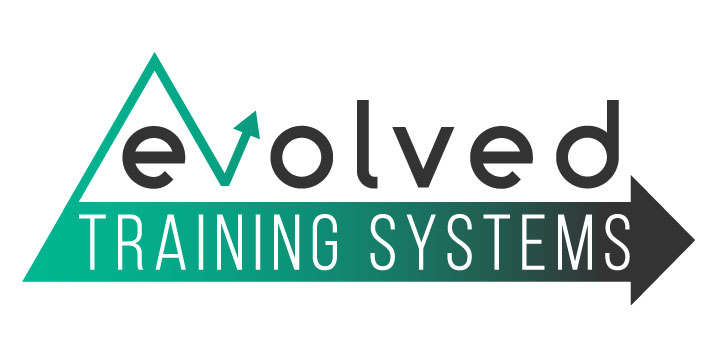In early July, I spent 5 days hanging out with one of my best friends from early childhood. We were inseparable from 5-12 years old, playing basketball together for hours every day. This consumed us, and then he moved to Switzerland. We continued our friendship bi-continentally, and I made 4 trips out to Europe while he made more than 8 trips back to the States. The 34 year-old version of our relationship is expectedly different than that from the past.
My buddy, Simon, is a very intelligent and analytical person. He currently owns his own consulting firm in London, focusing on economic prosperity in developing nations. Our relationship has progressed from one of mutual activity to one of shared sentiments and intellectual gymnastics. The five days we spent together contained very minimal discussion of fitness. In fact, the primary way in which it was prevalent was to discuss the current state of our businesses and how we can continue to drive them forward.
Throughout these discussions, I asked Simon what his gym is like and what he looks for in a gym. I was surprised to find out that he goes about three times per week for a few weeks in a row. Then, he will take a few weeks off. When he reaches a point where he feels like he’s “out of shape,” he will start going three times a week, once again, just for a few weeks. This conversation sparked a thought in my mind regarding the difference between training and exercising and how it impacts the way fitness is implemented into our lives.
I define exercise as the use of physical activity to provide a general sense of well-being. This can be applied mentally as well as physically. I would even go as far as to say that exercise can be performed for enhanced physical appearance but without a regard for achieving a specific goal. If the goal is just to avoid being unhealthily overweight, that is not a tangible enough goal to be considered training. There is nothing wrong with exercise if that is the limit to which you want to pursue physical activity.
Training can be defined as a metric-based approach to exercise in which the athlete pursues their endeavor with fervor and passion that drives them to improve performance. The word athlete is important, because training is an athletic pursuit. When Simon and I would spend hours on the basketball court every day, we were not playing or exercising. We were practicing and training with the purpose of making it to the NBA. Whether this goal was outrageous or not, it was a driving force that provided us with an unparalleled level of motivation and desire; a reason to get up each day.
The adult version of trying to make the NBA is to train with a goal. This type of approach is not always exciting or sexy. Training is often somewhat monotonous and repetitive by design. Practicing basketball with the intention to make the NBA is no different. The young athlete must spend hours in solitude refining form and technique. The young baller will need to shoot upwards of 200 foul shots every day, spend another half hour on ball handling drills, another half hour working on shooting off the dribble or on the move, another half hour on conditioning energy systems, and on down the line. This process must be repeated almost every single day for a matter of months, years, and decades. The top NBA players have the same level of work ethic as adults.
We are not professional athletes and we don’t have the time to pursue fitness with the same fervor we did with sport as children. Luckily for us, training fitness for hours every day would be counter-productive to the goal. Practicing basketball does not have the same level of deteriorative impact on the body as weight training. When someone dedicates hours to practice foul shots, this is the equivalent of technical development in a gymnastics or barbell movement. However, we cannot realistically sit there and do a 30-min EMOM of thrusters followed by a 30-min EMOM of pull-ups, followed by a 30-min EMOM of snatches and muscle-ups. The body would respond to this with a down-regulation of important hormones, and the trainee would end up injured or with regression of performance (albeit in the case of extraordinary circumstances where the athlete is paid to pursue this endeavor full time and can cater their entire lifestyle to accommodate this quest). This article is meant to provide context to the working professional that still wants to train versus exercise.
How can this concept of purpose be applied to someone that wants to do a bit more than exercise, without having to sacrifice their entire lifestyle for the pursuit?
Set a goal
The goal needs to be specific, and it should not be outrageous (no, I guess it appears I will not be going to the NBA). Make your goals short-term, realistic, and achievable. If you want to lose weight, determine exactly how much and determine a specific date. Maybe you want to achieve 40 burpees in 2 minutes. This is a great goal if your current PR is 32 reps, but you should rethink the goal if your current PR is 20. If you want to get stronger, choose one or two main lifts and tell yourself when you will achieve this. If you currently bench press 225 lbs don’t set your goal at 300 lbs. Provide yourself with some realistic metrics that inspire you to show up at the gym 4-5 days per week. Then make sure to celebrate your achievements and set new goals!
Create a plan
At San Diego Athletics, the training is semi-repetitive. Each week we perform the same movements as part of the strength program. The purpose is to utilize this as a means of progress. During the course of a 12 or 13-week cycle, where a strength lift is performed each week with a 5×5 sequence, it is realistic to try to add 2 lbs to the bar each week. If we start the 5×5 at 200 lbs, do some math, and determine that this would equate to a 25-lb increase over 12 weeks, we can realistically set our goal to achieve 225 lbs for 5×5 at the end. Get excited about your plan; get excited to show up to the gym each week and demonstrate that your plan is in effect. This self-accountability is one of the staples of training.
Live your life in a manner conducive to your goals
The process of training should not consume you nor become an obsession, but it should have a place in your hierarchy of priorities. If you intend to embark on a program of training, you must cater your lifestyle to achieve this goal. If your goal is to gain strength, you will need to have a slight surplus of quality food in your daily nutrition program. If your goal is to lose body fat, you will need to slightly under consume quality food each day. If your goal is to increase proficiency in a handstand variation, you will need to practice this regularly (i.e. practice shooting foul shots). You should not completely avoid alcohol if you enjoy it, but you should be responsible with your consumption. You do not necessarily need to sleep 9 hours a night, but you should prioritize quality sleep on a regular basis. Your lifestyle should reflect what you deem important and training, by my definition, places fitness somewhere in this hierarchy of importance.
There is nothing wrong with the way my buddy Simon utilizes fitness as a form of exercise. He is healthy enough, and prefers to fill his free time with different endeavors. At SDA, the majority of members tend to refer to themselves as athletes and the training they endure is exemplary of this pursuit. If there were ever a time that someone wanted to transition from exercising to training, they would only need to set tangible goals and utilize their time to work more diligently towards achieving these goals. For those that believe you are already training, you should take a look at the processes of accountability that you have in place. Can you enhance these in any way to improve the results of your training? Make sure you are setting realistic goals, tracking your results and using your fitness to achieve these goals as efficiently as possible. The motivation is in the pursuit.




